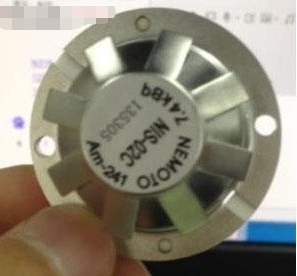How to use the ionic smoke sensor NIS-02C to detect smoke turbidity?
As we all know, the production process of iron and steel, non-ferrous metal smelting, thermal power generation, cement and petrochemical enterprises, exhaust gas from automobiles and airplanes, as well as garbage incineration, heating boilers and household stoves all emit a large amount of smoke and dust. The substances in the smoke and dust are very complex. For example, a large amount of smoke and dust will be generated during the combustion of a boiler, including sulfur dioxide, nitrogen oxides and other air pollutants. These pollutants are discharged into the atmosphere, forming acid rain, etc., which seriously disrupts the ecological balance and brings great inconvenience to people's lives.
Approximately 100 million tons of smoke and dust are emitted into the air every year, many of which are toxic. If it is not handled in time, it will not only cause damage to our living environment, but also affect human health and even life.
Since various harmful substances adhere to the surface of dust particles, once they enter the human body, they will cause various respiratory diseases.
The solid particles of smoke and dust emitted from coal combustion and industrial production are more harmful to the human body than other smoke and dust. Its main components are silica, alumina, iron oxide, calcium oxide and unburned carbon particles. The harm of smoke and dust to the human body is related to the turbidity of smoke and the size of smoke particles:
Soot particles larger than 5 microns will be blocked by nose hair and airway mucus. Particles smaller than 0.5 microns usually adhere to the surface of the upper respiratory tract and are discharged with sputum. The particles with a diameter of 0.5-5 microns are the most harmful to the human body. They are not only deposited in the lungs, but also directly enter the blood to reach various parts of the human body.

Therefore, reducing smoke and dust emissions and reducing the concentration of smoke is an important part of China's environmental protection. Monitoring smoke turbidity is an effective measure to reduce smoke and dust emissions. Photoelectric sensors and smoke sensors can be used to monitor smoke and dust turbidity.
The principle of detecting smoke turbidity with photoelectric sensor:
The turbidity of the smoke in the smoke is detected by the change of light during the spread of the smoke. If the smoke turbidity increases, the light emitted by the light source is absorbed and refracted by the smoke particles, and the light reaching the photoelectric sensor decreases. Therefore, the intensity of the output signal of the photodetector can reflect the change of the smoke turbidity.
Japan NEMOTO ionized smoke sensor-NIS-02C is used to detect smoke turbidity, and other smoke sensors use extremely small amounts of radioactive substance 241Am inside. Inside the smoke alarm, there are no regulations for disposal as waste. The size, shape, and smoke sensitivity of this product are exactly the same as NIS-09C and can be interchanged at will.
If you want to know more, our website has product specifications ionic smoke sensor NIS-02C, you can go to ALLICDATA ELECTRONICS LIMITED to get more information

